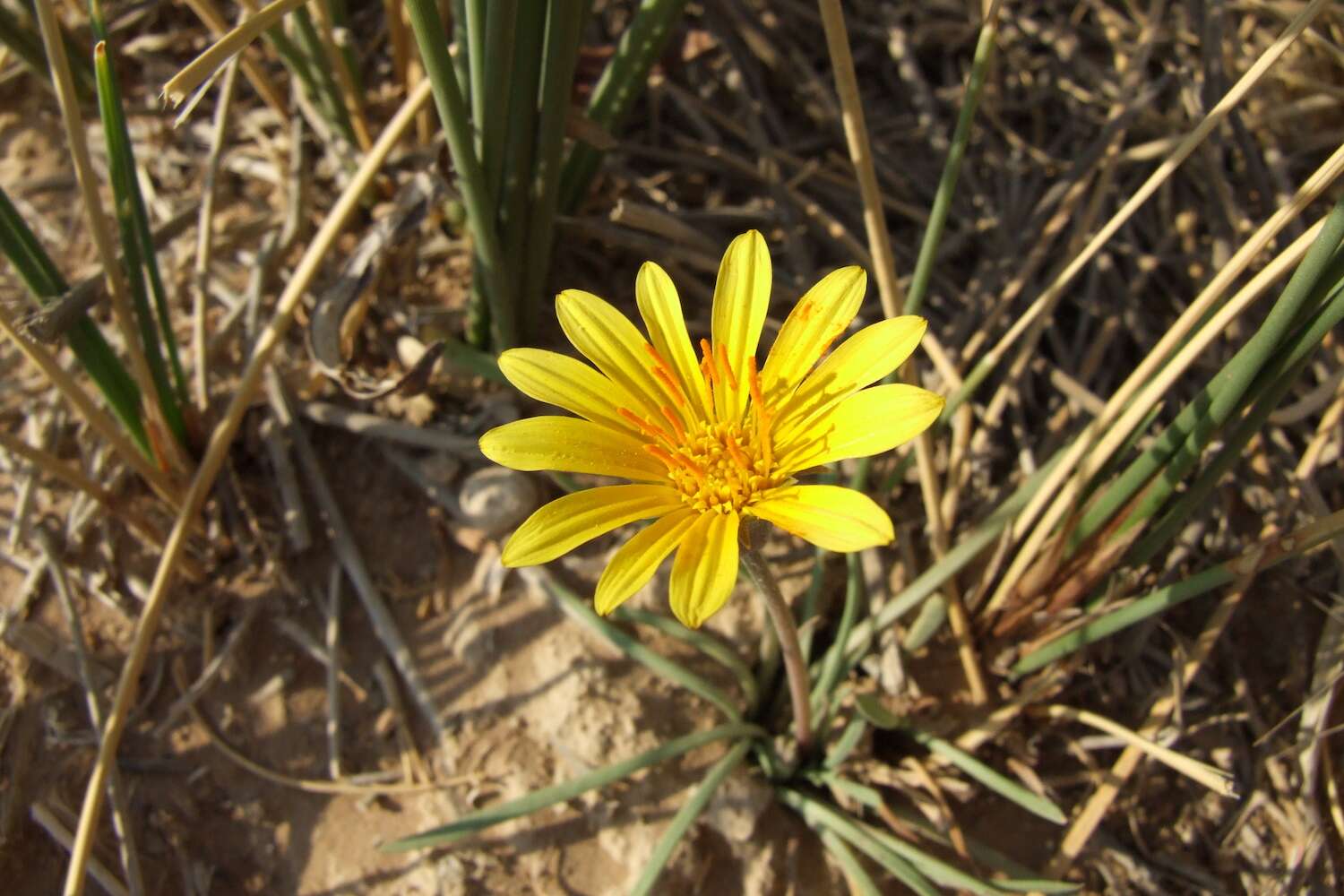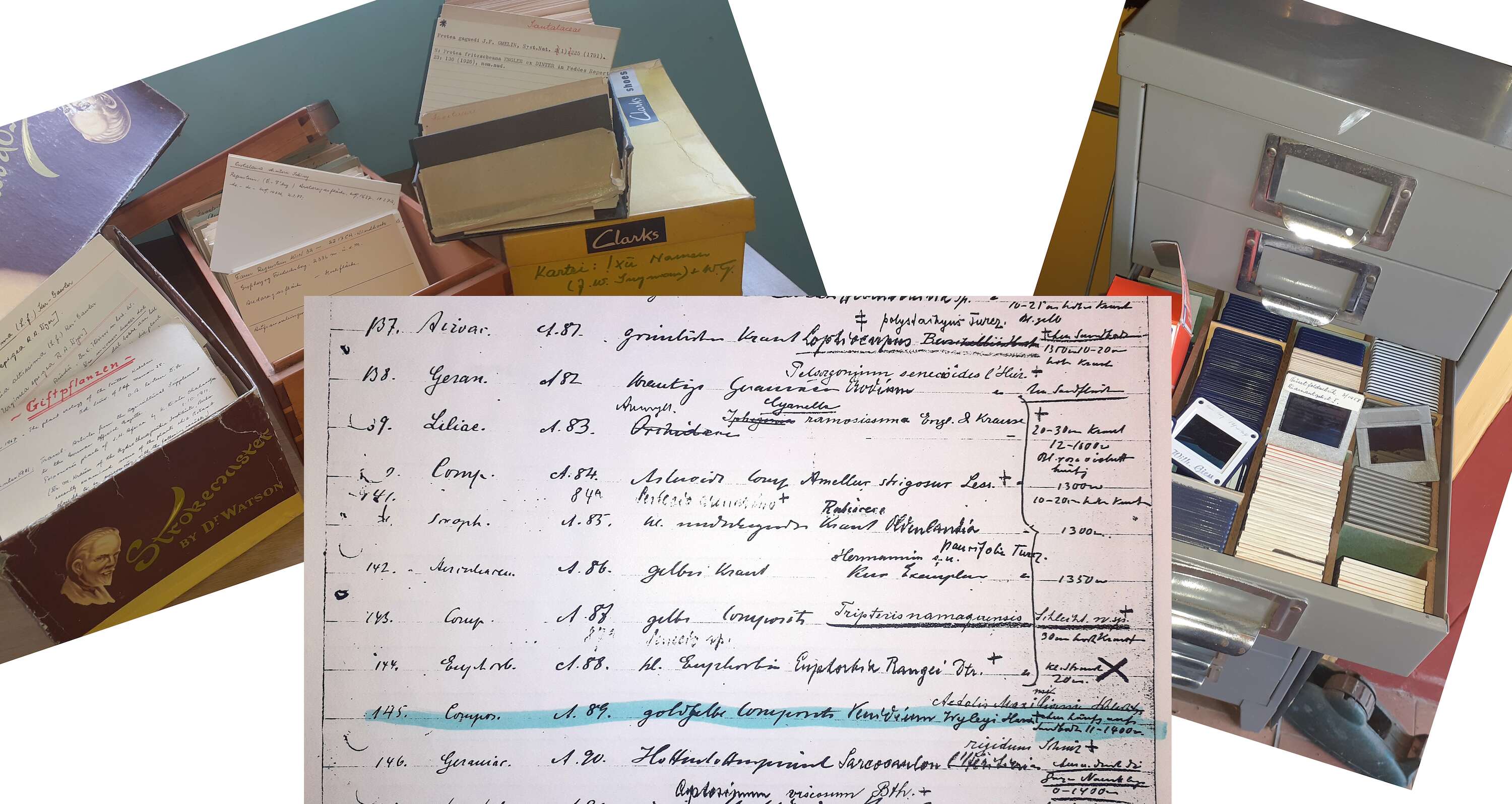
Uniquely Namibian
Namibia's Endemic and Near-Endemic Plants
29th October 2024
29th October 2024
Plants are the basis of almost all other life on earth, yet they are highly undervalued in Namibia due in part to the lack of knowledge about indigenous plants among ordinary citizens. Some of Namibia's plants are rarer and more highly threatened than black rhino, yet few people could even name them. As plant poaching becomes increasingly prevalent, more Namibians need to know why plants are important and what they can do to conserve them.
To improve awareness and better manage our plant resources, we started collecting all existing knowledge on Namibian plants in one user-friendly database. Since we have close to 4,200 indigenous plants, we had to divide this task into more manageable sections and decided to start with endemic and near-endemic species. Endemic
refers to plants that occur nowhere else on earth. Our near-endemics occur mainly in Namibia, with smaller parts of their ranges in other countries. As the only or primary national custodian of these plants, Namibia has a particular responsibility to conserve these species.
The challenges and rewards of building a plant database


Quite a substantial amount of information on Namibian plants is available, but it is scattered throughout the world in different sources and formats, including online databases, herbaria, scientific articles, internet sites, unpublished reports, postgraduate theses, field notes and photo collections. Most of this information is not accessible to laymen, mainly due to language barriers (much of it is in German), financial resources (getting access to published articles can be expensive) or complex terminology that only experts understand.
Besides these challenges, much of the information is inaccurate or simply wrong, especially on the internet. This is often due to websites being managed by laymen or even professional botanists who do not know Namibia and its flora or do not understand German. We want to correct these errors and present a definitive data set for Namibian plants.
To this end, I (Herta Kolberg) started a database of indigenous Namibian plants more than 40 years ago. This was later combined with my colleague Patricia Craven's database, to which we added information as it became available. This soon became an overwhelming, full-time task.
In 2022, Patricia and I were funded by the Namibian Chamber of Environment to update the endemic plant information and enter it into the Environmental Information Service Namibia (EIS), which hosts atlases for many species groups and a library of information about Namibia. This was the first time plant information was included in the EIS. In May 2023, I obtained funding from the JRS Biodiversity Foundation to update the information for near-endemic plants over two-and-a-half years; enlisting the help of Sofia Amakali to enter the data. Our ultimate goal is to bring together all existing information, verify, summarise and analyse it and make it available freely online through the EIS. We aim to publish information that is scientifically correct, yet understandable and useful to the layman.


The Plant Information System on the EIS now lists all the indigenous plants recorded in Namibia. One of our significant challenges is deciding which scientific names to use, since these change quite frequently as scientists investigate how different plant species and genera (the category above species) are related to each other. In some cases, a plant may be renamed by one scientist and then changed back to its old name by the next scientist. The scientific community has numerous ongoing debates about which names are correct.
In recent times, many plant naming decisions are based on molecular (DNA) differences between plants or groups of plants. If the differences between plants at the molecular level are not related to what you can see and use to identify a plant (known as morphological differences), this is of no use to the field botanist or layman. Foreign researchers often do not use Namibian specimens in their work for plants indigenous to the country, but also occur elsewhere. This leads us to question whether their results also apply to Namibia. For these reasons, we do not accept all name changes for Namibian plants and instead stick to the ones we know until there is better evidence and disputes are settled. This is not just our view – many botanists worldwide have called for greater stability of plant names.
Exploring and contributing to the plant database


When exploring the EIS Plant Information System you will find basic information, where available, for each plant species. This includes the plant group (Dicotyledon, Monocotyledon, Gymnosperm), plant family, lifeform (tree, shrub, grass, etc.), status (endemic, near-endemic), legal status (if it is protected in Namibia and by which law) and the region or regions in Namibia where it can be found. You will also find out how threatened the species is according to the International Union for the Conservation of Nature's red list and whether or not trade in this species is regulated by the Convention on International Trade of Endangered Species (CITES).
Each endemic and near-endemic species entry (336 of 618 species targeted for the JRS-funded project completed thus far) includes a link to a species information sheet, which contains all the information we have as well as a distribution map and some photographs of the plant, when these are available. Eventually, we want to produce these sheets for all indigenous Namibian plants. We use information from specimens collected in Namibia to generate the plant descriptions. This makes the descriptions truly Namibian, because plants of the same species may look slightly different in other countries where they occur, mainly due to different growing environments. This guide should make it easier to identify plants in Namibia.
As we develop information sheets for each species, we discover the need for more information that could be supplied by Namibians who are acquainted with these species. First, many of the common names of each plant in different languages may be mis-spelt or absent. We included only published names, found on herbarium specimen labels or in reports and an index card system created by the late botanist Willi Giess. We retained the spelling used in the source, but realise that this may be outdated or wrong. For this reason, we appeal to speakers of the various languages to give feedback on any such mistakes. Not many local names are recorded for the endemic and near-endemic plants – if anybody can provide additional names, we would be very grateful.


Secondly, we have little or no information on the traditional uses of many endemic and near-endemic plants. On the species sheets, we include only broad use categories (e.g., food, fodder, medicinal) and only information that is already in the public domain to protect the intellectual property of the holders of that knowledge. Recording traditional uses for plants is nonetheless an important task, and we invite any traditional knowledge holders to work with us to preserve this information.
Thirdly, we have few photographs of all the endemic and near-endemic plants, which limits the usefulness of this database for people to identify these species correctly. The JRS-funded project includes two field trips annually to obtain photographs and make other botanical discoveries. We completed one trip to southwestern Namibia and one to the northwest, during which we took photographs of 226 species, but we are still missing photos of just over 200 species. To fill this gap, we launched a competition to encourage the citizen science community to submit images to the Indigenous Plants Atlas of the EIS. Cash prizes were offered to the top three contributors of near-endemic plant photos. Unfortunately, the drought seems to have put a damper on the number of records submitted by atlasers and we haven't received as many photos as we had hoped.
Where to from here?

Our two field trips resulted in several interesting discoveries that reveal how much more is yet to be discovered about Namibia's plant diversity. In the northwest we found one species (Lamiaceae family) possibly new to science and two species (Hybanthus mossamedensis, Distimake aegyptius) known only from outside Namibia up to now. We also recorded one species (Cleretum papulosum), known only from South Africa until now, on the field trip to the southwest. Based on this success, we look forward to future trips to add to our knowledge of Namibian plant species.
During the current project, we trained 37 stakeholders, 13 junior staff or interns at the National Botanical Research Institute and a project intern. Mentoring new plant scientists and transferring the knowledge I have accumulated during my long career in Namibian botany are important parts of this endeavour. Since this work will continue long into the future, we need many more dedicated young Namibian botanists to take up this challenge.
Once we have completed the current work with endemic and near-endemic species, we aim to produce an electronic record of all the plants in the country. Each record will include basic information about a plant: an identification key, description, distribution, old names (synonyms), voucher specimens and more. This should allow the user to identify plants. To publish a hard-copy Flora book with full colour photographs of each plant would not be feasible, firstly because by the time a book is published, the information is already out of date and secondly because of cost. We are therefore working towards a digital, online Flora for Namibia, which can be kept up to date with the latest discoveries and science.
We will complete the present phase of the programme, focusing on endemic and near-endemic plants, during the next 15 months. Towards the end of the project, we will demonstrate how the information on the EIS can be used for the different purposes of our stakeholders. Once this phase is completed, we need to identify further funding sources to move on to another group of plants. We were thinking of dividing the remaining species (over 2700) into categories linked to their growth form (e.g. trees, grasses, bulbs) or use type (e.g. forage, medicinal, cultural). If we maintain our current rate of progress, this work should keep us busy for the next 12 years!

Fun facts about Namibia's plants
We have close to 4200* plants indigenous to Namibia.
About 700* of these occur nowhere else on earth (endemic to Namibia).
For about 715* plants, the largest part of their distribution range is in Namibia, with a smaller area extending into one of our neighbouring countries (near-endemic to Namibia).
Namibia has a full responsibility to protect endemic species and a greater duty to conserve near-endemic plants.
* It is impossible to give exact numbers, because there is continuous research conducted worldwide which results in names changing, new species being discovered and distribution ranges updated.
For articles on similar topics, please click one of the following options:
For more great articles from Conservation Namibia see below...
Conservation Namibia brought to you by:
We use cookies to monitor site usage and to help improve it. See our Privacy Policy for details. By continuing to use the site, you acknowledge acceptance of our policy.











